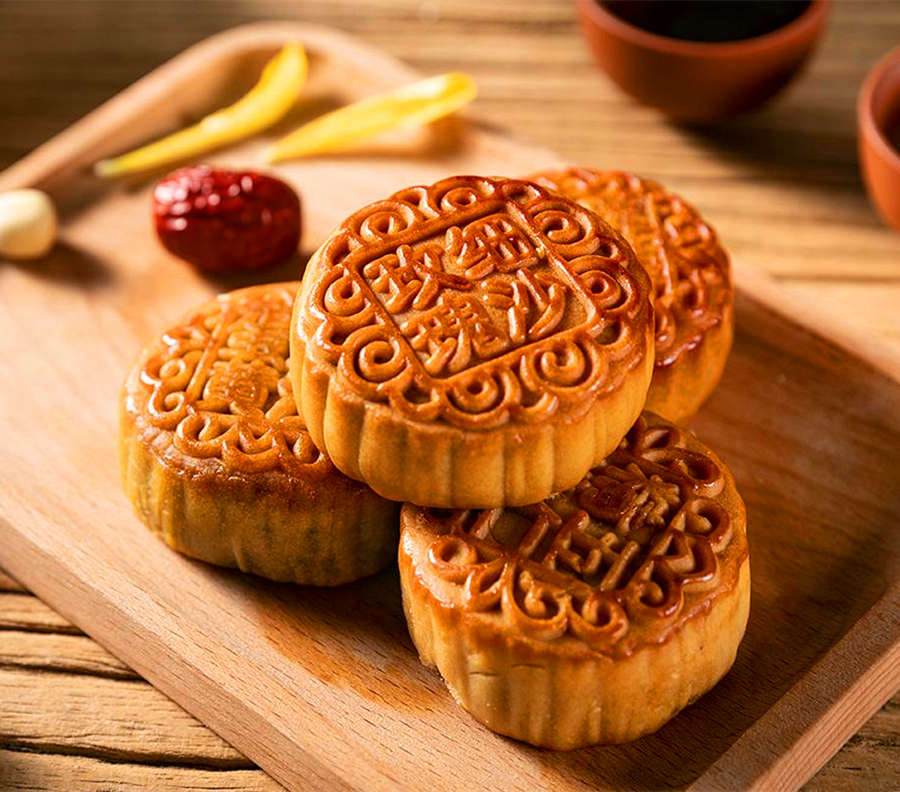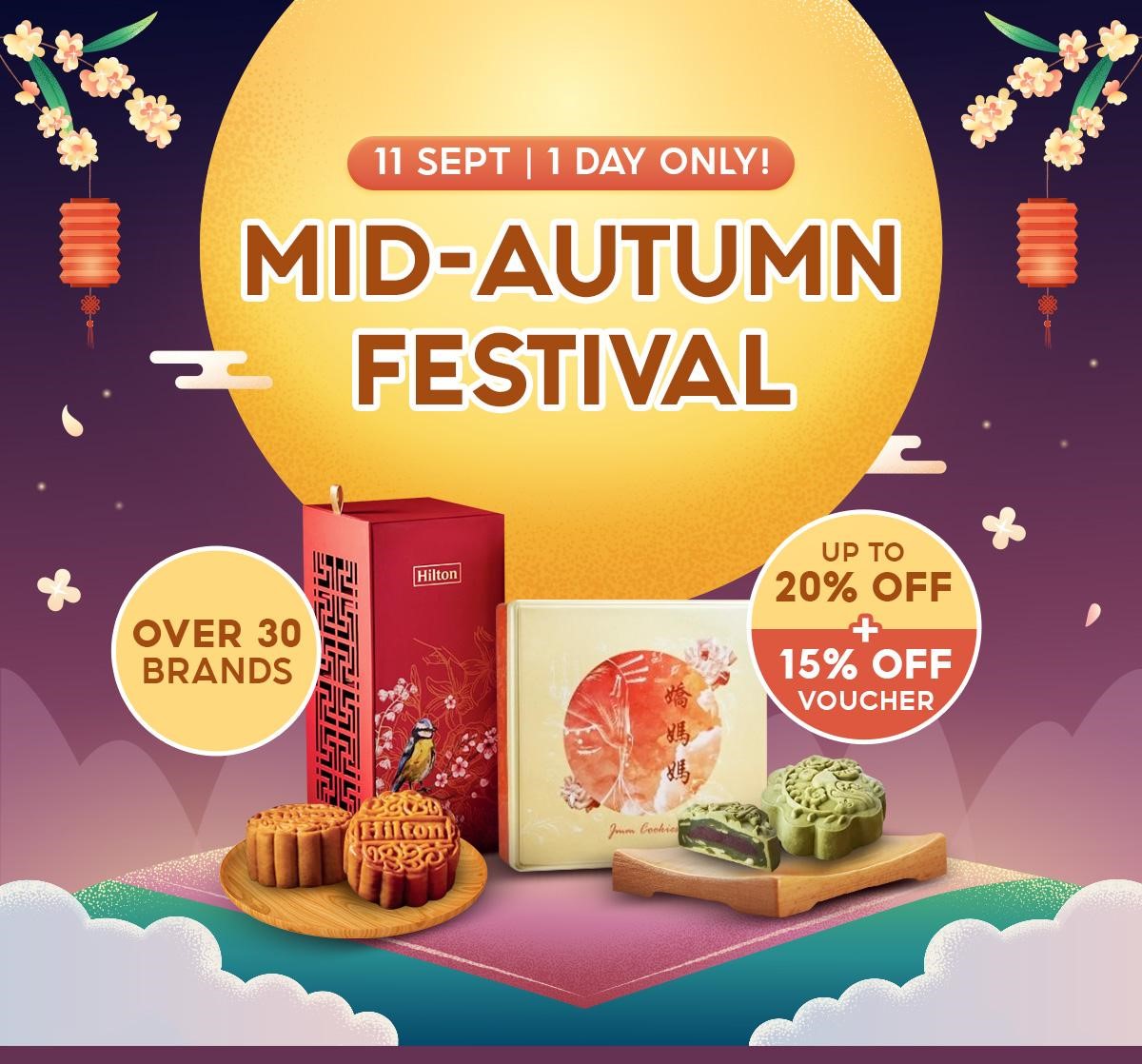

Most mooncakes consist of a thick, tender pastry skin enveloping a sweet, dense filling, and may contain one or more whole salted egg yolks in their center that symbolizes the full moon.

Mooncakes have also appeared in western countries as a form of delicacy. Just as the Mid-Autumn Festival is celebrated in various Asian localities due to the presence of Chinese communities throughout the region, mooncakes are enjoyed in other parts of Asia too. Today, it is customary for business people and families to present them to their clients or relatives as presents, helping to fuel a demand for high-end mooncakes.

Mooncakes are usually eaten in small wedges, accompanied by tea. A traditional Cantonese mooncake is a round pastry, measuring about 10 cm (4 in) in diameter and 3–4 cm ( 1 + 1⁄ 4– 1 + 1⁄ 2 in) thick, with a rich thick filling usually made from lotus seed paste (other typical fillings include red bean paste or mixed nuts) surrounded by a thin, 2–3 mm (approximately 1/8 of an inch) crust and may contain yolks from salted duck eggs. The Cantonese mooncake is the most famous variety. There are numerous varieties of mooncakes consumed within China and outside of China in overseas Chinese communities. The Mid-Autumn Festival is widely regarded as one of the four most important Chinese festivals. Mooncakes are offered between friends or on family gatherings while celebrating the festival. The festival is primarily about the harvest while a legend connects it to moon watching, and mooncakes are regarded as a delicacy. A mooncake ( simplified Chinese: 月饼 traditional Chinese: 月餅) is a Chinese bakery product traditionally eaten during the Mid-Autumn Festival (中秋節).


 0 kommentar(er)
0 kommentar(er)
